Parsival
Prologo de Cruzada contra el Grial, La lucha entre Cátaros, Templarios y la iglesia de Roma
Wolfram von Eschenbach nos informa que Kyot, "el famoso Maestro", trajo a suelo germano la verdadera leyenda del Graal desde la Provenza; y que Chrétien de Troyes (el autor del Parsifal galo, o el Conde del Graal) la modificó. Si bien es cierto que no existe poema épico alguno acerca del Graal escrito por "Kyot", sabemos que a finales del siglo XII un poeta francés de la Provenza de nombre Guyot recorría las cortes más renombradas del norte y sur de Francia; y que entre sus poemas se encontraba una "Biblia" en la que caricaturizaba a sus contemporáneos. Resulta posible atribuir a este Guyot una versión del Parsifal que jamás llegó a nuestras manos.
Otto Rahn in Wikipedia
Otto Wilhelm Rahn (n. Michelstadt, 18 de febrero de 1904 - 13 de marzo de 1939) fue un escritor alemán aficionado al esoterismo, la historia y el medievalismo. Miembro del Partido Nazi y Obersturmführer de las SS, su figura está asociada a las creencias esotéricas del ocultismo nazi extensamente difundidas en dicho cuerpo militar. Nació y se crio en el seno de una familia de clase media. Por influencia de su padre, juez en la ciudad de Maguncia, inició estudios de Derecho, aunque también le agradaba la música y era un buen pianista. Durante 4 años (de 1922 a 1926) estuvo matriculado en las facultades de Derecho de Giessen, Friburgo y Heidelberg.
Croisade contre le Graal
Si le Graal est un symbole phare — aussi mystérieux que fascinant — de la mythologie et de l’inconscient collectif européens, Croisade contre le Graal appartient à la famille — peu nombreuse — des ouvrages mythiques, des livres cultes. Depuis sa parution (1933 en Allemagne, 1934 en France), il a guidé des générations de rêveurs vers les cimes ariégeoises, en général, et le château de Montségur, en particulier. Régulièrement réédité des deux côtés du Rhin, il est régulièrement épuisé et recherché. Adversaires et partisans des thèses développées par Otto Rahn, tous s’accordent sur un point: Croisade contre le Graal a largement contribué à l’engouement touristique pour les Pyrénées cathares.
What is the Grail?
The Grail. Between 1190 and 1240, it formed the central theme of a series of literary works that spoke of, and appealed to, a new social class, that of the knights and warriors and the adventures they encountered on their travels. In recent decades, it unleashed Indiana Jones on one of his death-defying treasure hunts and was the central ingredient of Dan Brown’s The Da Vinci Code, one of the biggest bestselling novels ever.
For Richard Barber, in The Holy Grail: The History of a legend, “it is, in all its forms, a construct of the creative imagination”. However, for dozens of other authors, the Grail is not a literary invention, but a veritable treasure, out there, somewhere. Unfortunately, in general, studies trying to identify and trace the physical Grail have taken on flights of fancy. The Grail has been linked with countries from the Middle East to America, as well as with the persecuted Cathars and even extra-terrestrial beings. It has been labelled a code word for the Ark of the Covenant, after the Templars allegedly transported it from the Middle East to a new hiding place in France.
Otto Rahn: A Hero's Journey
I recently visited the former South of France residence of the legendary Grail hunter Otto Rahn, only to discover that it was scheduled to be demolished, thus ending an era, and prompting this memorial.
I believe Otto Rahn (1904-1939) was a hero; the real Indiana Jones and prototype for Dan Brown’s Robert Langdon character. A tireless explorer, Rahn was a gifted researcher, committed to the quest like no one before, or since. Quite simply, he was a grail hunter extraordinaire.
Rahn was obsessed with the Cathars, and was convinced that their treasure remained hidden in the shadowy crevasses of the Pyrenees. His research led to Montségur, which he believed to be Munsalvaesche, the Mountain of Salvation of Wolfram von Eschenbach’s epic grail romance, Parzival. Not surprisingly, the entire region around Montségur soon became Rahn’s esoteric playground.
Otto Rahn in Wikipedia
Otto Wilhelm Rahn (February 18, 1904—March 13, 1939) was a German medievalist and a Obersturmführer (First Lieutenant) of the SS, born in Michelstadt, Germany.
Speculation still swirls around Otto Rahn and his research. From an early age, he became interested in the legends of Parsifal, Holy Grail, Lohengrin, and the Nibelungenlied. While attending the University of Giessen he was inspired by his professor, the Baron von Gall, to study the Albigensian (Catharism) movement, and the massacre that occurred at Montségur. Rahn is quoted as saying that "It was a subject that completely captivated me''".
Work
A review of Otto Rahn’s Lucifer’s Court by John J. Reilly
This book and its companion volume, Crusade against the Grail, are about as close as we can get to an “authoritative” statement of the esoteric dimension of the Nazi regime in Germany. The publication of the Crusade book in 1933 persuaded SS leader Heinrich Himmler to invite its author, Otto Rahn (1904-1939), to work for the SS as a folklorist. As the book under review here also does in part, that work developed the thesis that the doctrines of the medieval Cathars of Provence were encoded into Parzival, Wolfram von Eschenbach’s 13th-century version of the Grail legend. Rahn later became a member of the Ahnenerbe (“ancestral heritage”) bureau of the SS, in whose employ he finished Lucifer’s Court.
A review of Otto Rahn’s study of Grail lore by John J. Reilly
Anyone who undertakes the study of the intellectual underpinnings of Nazi Germany (1933-1945) will soon notice that at least some members of the regime were doing things that are not covered by the typical survey course in political theory. Researchers who attempt to investigate these anomalies will dig through a swamp of popular and crank literature about the Third Reich’s connection to the occult underground, some of it coincident with conspiracy theory and some of it (often the most coherent works) purely fictional. Nonetheless, a sober study of primary sources will reveal that not all the fantastic rumors were made up out of whole cloth.
The original Indiana Jones: Otto Rahn and the temple of doom
As Indiana Jones returns to our screens, John Preston looks at the Nazi archaeologist who inspired Spielberg's hero, and finds a story more bizarre than anything the director could have dreamt of
Very little is certain in the short life of Otto Rahn. But one of the few things one can with any confidence say about him is that he looked nothing like Harrison Ford. Yet Rahn, small and weasel-faced, with a hesitant, toothy smile and hair like a neatly contoured oil slick, undoubtedly served as inspiration for Ford's most famous role, Indiana Jones.
Like Jones, Rahn was an archaeologist, like him he fell foul of the Nazis and like him he was obsessed with finding the Holy Grail - the cup reputedly used to catch Christ's blood when he was crucified. But whereas Jones rode the Grail-train to box-office glory, Rahn's obsession ended up costing him his life.
Otto Rahn Bio
Berlin between the wars was a city known throughout Europe for its bohemian subculture of young intellectuals. Amongst the personalities who hotly debated the many modernist “isms” that were fracturing the old ideological certainties that had glued together the 19th century, few individuals were more colorful or conspicuous than a febrile dark-haired, green-eyed young man called Otto Wilhelm Rahn.
Rahn was welcomed in the cafes and nightclubs of 1930’s Berlin because he was a hyper-intense intellectual – a brilliant talker with a great deal to say but he was also a conspicuous outsider in that he was unfashionably dismissive of the emergent modernism that so excited his peers. Moreover, he had even less empathy with the cynicism and decadence that colored there lifestyle. Rather, like that of most Germans outside of Berlin, Rahn’s sensibility had been molded by influences wholly incompatible with the café society avante-garde.

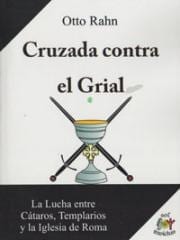

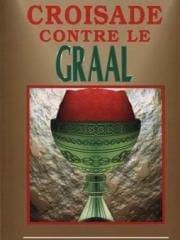
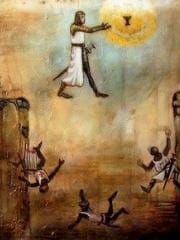


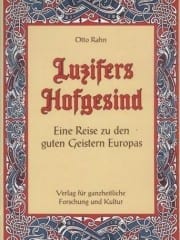
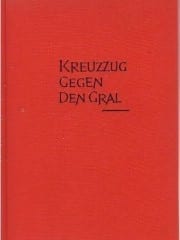

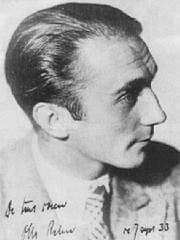
Commentaires récents
il y a 12 années 36 semaines
il y a 12 années 36 semaines
il y a 12 années 36 semaines
il y a 12 années 37 semaines
il y a 12 années 40 semaines
il y a 12 années 45 semaines